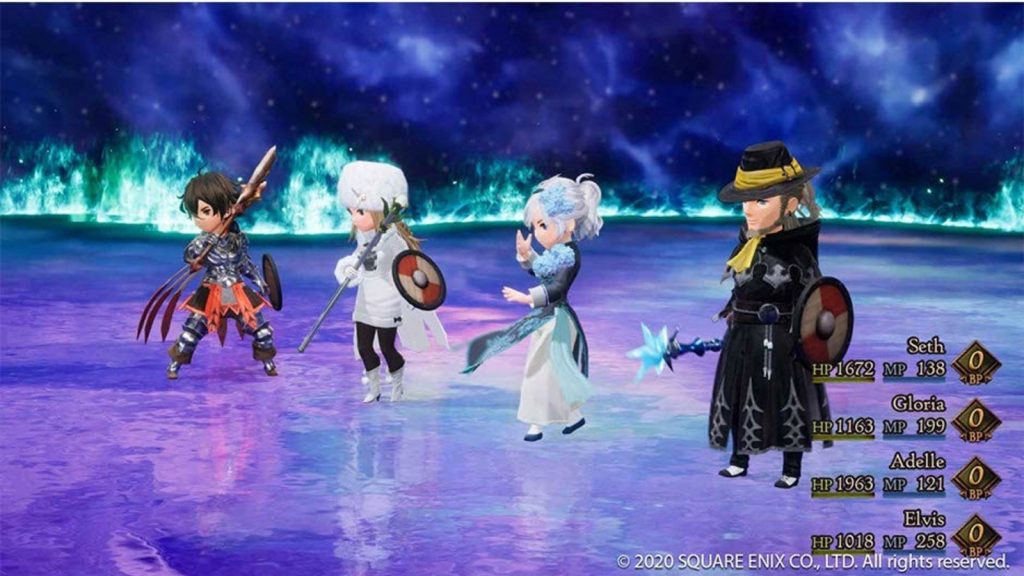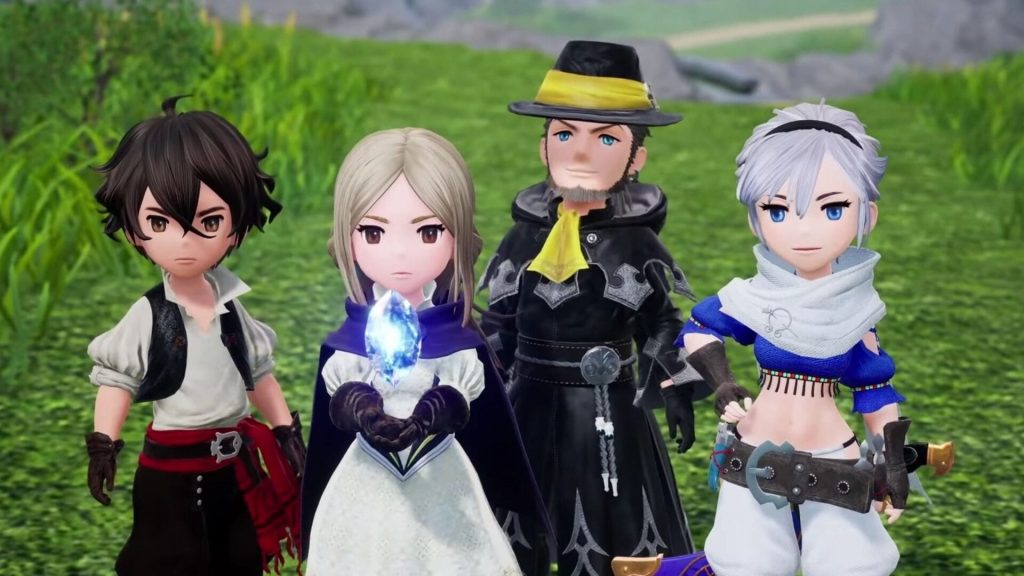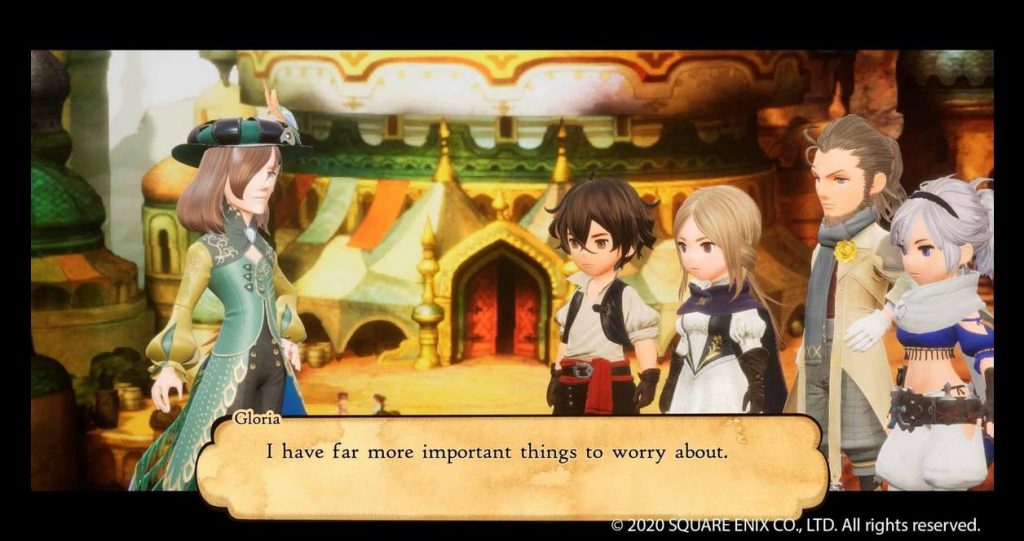Innovation comes in many forms. Some games try to realize the intent, others add their own unique mark to the genre, and a few attempt to master the idea. Perhaps one of the biggest fallacies we have in gaming is that things need to be completely different, instead of focusing on enhancing what resonated with so many others. With Bravely Default II, the goal isn’t to reinvent the JRPG genre but rather, modernize a tried and true formula. With a history of great experiences and solid earlier entries, is Bravely Default II an early Game of the Year contender, or is it just another JRPG? Here’s our Bravely Default II Review.
Similar to Final Fantasy and games of the like, Bravely Default II takes place in a different area than the previous adventures, with the connection being more thematic than anything else. Here players are given a rather familiar plot that goes in a relatively expected direction.

After starting on their own, players quickly build a team to fight an impending evil. Fans of a robust world will enjoy the ability to speak to people in towns, interact with those around you, and countless side-quests that make the world feel alive. These are needed to break up the relatively basic story arc of collecting crystals in order to obtain the power required to defeat evil. Enjoyment largely hinges on how much you’re willing to invest. If getting a feel for the world is all that matters, odds are it will resonate, whereas fans of the genre will just see another story that hits familiar beats. Unfortunately, similar things can be said about gameplay too.
For better or worse, Bravely Default II takes a lot from traditional JRPGs. Exploration is through a relatively straightforward overworld. There is grass, enemies, a wide variety of locations, characters, and more to see and interact with. Characters and locations will either be used in some way, either as an eventual destination or someone to talk to, with the occasional quest. Treasure is presented in a rather basic manner, there are a set number of chests you’re told are hidden around the area, with many of them requiring some level of exploration. Some elements, such as bushes or grass can give items and interact with, such as swinging your sword to cut it like in The Legend of Zelda. This leaves enemies, which are honestly the most interesting aspect.

Like most RPGs, enemies hover around areas, with each enemy having distinct locations it likes to reside and will chase you if engaged. Attacking before they reach you gives players a slight edge, making it advantageous to play ahead. Fights themselves are nothing too different. Players are given the option to attack, use magic, including the ability to swap between single or multiple targets, items, escape and use brave. Given the title, brave is a key element to most fights and determines how successful you are. The basic idea is, fights are turn-based, though brave allows you to make multiple turns upfront, in exchange for having a long wait. This is invaluable if it’s possible to overwhelm an enemy or critical healing, though it needs to be used wisely. When it’s all said and done though, it plays like a traditional RPG that rewards smart plays. On a high note, if an enemy is a waste of time, they will actually avoid you, saving time on pointless fights.
Outside of combat, the RPG elements are rather robust. Every character has the ability to equip different weapons, with unique designs, armor, and necklaces. Along with that, there are jobs and sub-jobs, which dictate how you look and what your characters can do, with more abilities and professions unlocking over time or through various conditions. There are also perks, such as more damage at night or better luck, among other things. Things like weight are a nice touch, forcing players to prioritize certain builds or weighing their options.

While all of this stuff makes for a fun RPG, there really isn’t much that makes Bravely Default II stand out besides art style. There is absolutely a lived-in quality to the adventure that holds it back. It’s hard to explain beyond a sense that you’ve already seen it and done it before. Be it combat or just exploration, it isn’t diverse enough to really stand out. This doesn’t prevent it from being a good or even great experience, it just doesn’t do much to stand out from a classic besides small touches like a torchlight at night.
A lot can also be said about the graphics. At times, Bravely Default II feels like it’s at odds with itself. The storybook visuals and charming designs stand out, whereas the choppy backgrounds and iffy landscapes leave a bit to be desired. Given the scale and the console, it is really to be expected, though certainly something I’d keep in mind.
Bravely Default II Review – Verdict
Ultimately, Bravely Default II wants to put a fresh coat of paint on traditional ideas. In so many ways Bravely Default II accomplishes this, be it familiar overworlds or robust lands to explore, it’s just that these concepts cut both ways. There isn’t much that makes it stand out next to the games it’s trying to mimic. As a result, those who love JRPGs will likely also love this, though those looking for a bit more will likely be underwhelmed.
[Editor’s Note: Bravely Default II was reviewed on Nintendo Switch and the publisher provided a copy for review purposes.]
